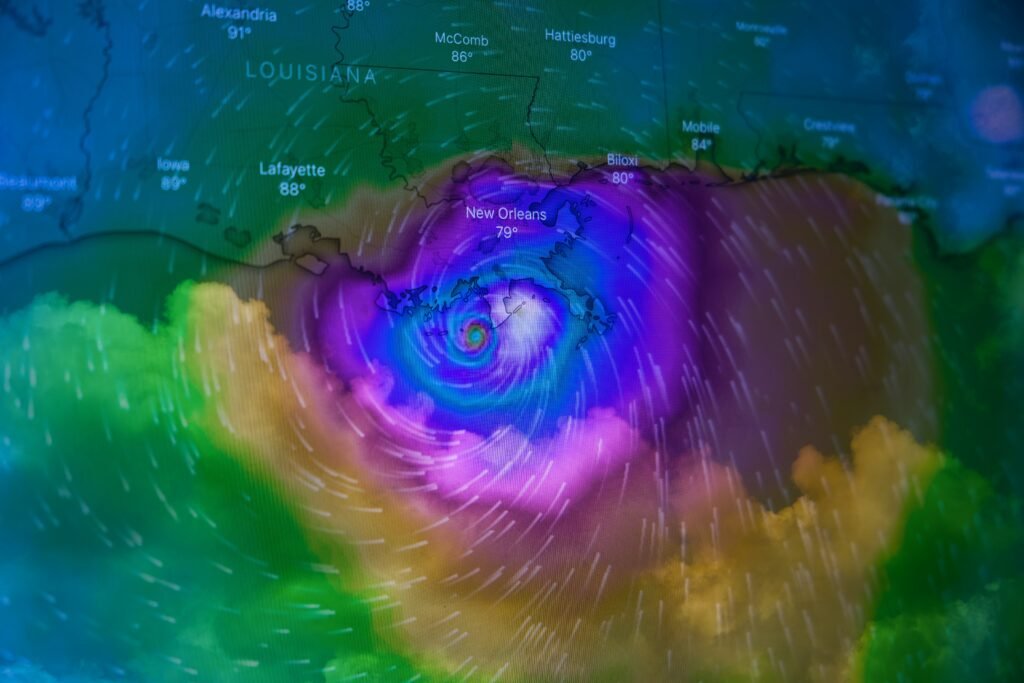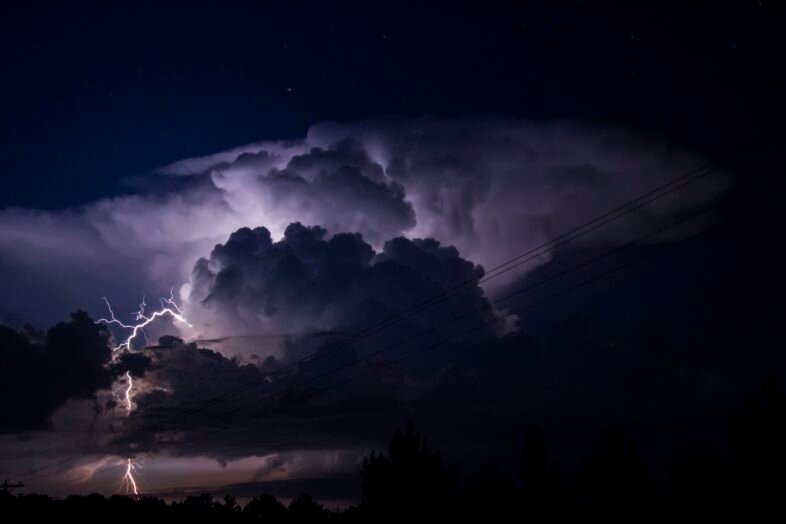Embarking on a hill walk during adverse weather conditions can be an exhilarating and challenging experience. But before you brave the elements and embrace the adventure, it’s important to ensure your safety. So, are there any precautions you should take? The answer is a resounding yes! From monitoring weather forecasts to packing essential gear and maintaining proper visibility, this article will guide you through the necessary steps to stay safe during your hill walks in adverse weather conditions. Yes, absolutely! When embarking on a hill walk in adverse weather conditions, it is crucial to take some safety precautions to ensure your well-being and the success of your adventure. Let’s explore some essential tips and guidelines to help you stay safe and enjoy your hike to the fullest.

This image is property of images.unsplash.com.
Choosing the Right Gear
Wearing proper footwear
When it comes to hill walking, wearing the right footwear is paramount. Ensure you have sturdy, waterproof boots with good traction. These will provide adequate support, stability, and protection against wet and slippery terrains. Your feet will thank you!
Dressing in layers
The weather in the hills can change rapidly, so it’s crucial to dress in layers that can be easily added or removed. Start with a moisture-wicking base layer to keep you dry, add insulating layers for warmth, and top it off with a waterproof and windproof outer shell. This way, you can adjust to the conditions and maintain optimal comfort throughout your hike.
Using waterproof gear
Investing in waterproof gear, such as a jacket and pants, will be invaluable when the rain and wind pick up. Not only will this keep you dry, but it will also help regulate your body temperature. Don’t forget a waterproof cover for your backpack to protect your essentials from getting wet.
Planning your Route
Checking weather forecasts
Before heading out, always check the weather forecasts for the area where you plan to hike. Pay attention to predicted temperature changes, wind speeds, and any warnings or alerts. This will help you make an informed decision about whether the conditions are suitable for your hike or if changes to your plans are necessary.
Avoiding exposed areas
In adverse weather conditions, it’s wise to avoid exposed or high-risk areas, such as ridgelines or steep slopes, where wind and precipitation can intensify. Instead, opt for sheltered paths or trails with more natural protection. This will minimize the risk of being caught in dangerous situations.
Sticking to familiar paths
In challenging weather, it is advisable to stick to familiar paths and trails that you have previously hiked. Familiarity with the route can offer a sense of security and confidence, as you will have a good understanding of the terrain and potential risks. Save new adventures for more favorable conditions.
Navigation and Communication
Carrying a map and compass
Even with advanced technology, it is crucial to carry a map and compass as your primary navigation tools. Learn how to read and interpret them, and always keep them easily accessible. GPS devices can be helpful, but batteries can die or signal can be lost, so having traditional navigation tools is essential.
Using a GPS device
Using a GPS device can be a valuable backup tool to complement your map and compass. It can provide real-time location tracking, waypoint marking, and even altitude readings. Familiarize yourself with its features and consider carrying spare batteries or a portable charger.
Keeping a charged mobile phone
Carrying a fully charged mobile phone is essential for emergencies and makes it easier to communicate with others if needed. However, keep in mind that reception might be limited in remote areas. Inform a reliable contact about your hiking plans and estimated return time, so they can alert authorities if you don’t check in as planned.
Monitoring Weather Conditions
Being aware of changing conditions
Weather conditions can change quickly in the hills. Keep a vigilant eye on the skies and be aware of any changes in wind, temperature, or precipitation. If conditions deteriorate rapidly, be prepared to adjust your plans accordingly and prioritize your safety.
Identifying signs of avalanches
In areas prone to avalanches, it is vital to be able to identify signs of instability in the snowpack. Look for recent avalanche activity, such as fresh snow slide marks or “whumphing” sounds. Steep slopes, cracking, or bulging snow are also indicators of unstable conditions. If in doubt, avoid the area altogether.
Recognizing hypothermia symptoms
Hypothermia is a serious condition that can occur in low temperatures and wet environments. Recognize the early warning signs, such as shivering, confusion, fatigue, and loss of coordination. Take immediate action by seeking shelter, changing into dry clothes, and consuming warm drinks or food. If symptoms worsen, seek medical assistance.

This image is property of images.unsplash.com.
Traveling with a Group
Informing others about your plans
When venturing into adverse weather conditions, it’s crucial to inform someone reliable about your hiking plans. Share details such as the route, estimated duration, and emergency contact information. If you don’t return on time, they can alert the authorities and provide important information for search and rescue efforts.
Sticking together
Hiking as a group in adverse weather is safer and wiser than hiking alone. Stay close and maintain visual contact with each other, especially in low visibility situations. Adhere to the principle of “no one left behind” to ensure everyone remains safe throughout the hike.
Assigning roles and responsibilities
Assigning roles and responsibilities within the group is vital for effective teamwork and safety. Designate a leader who is familiar with the route and navigation techniques. Assign responsibilities such as keeping an eye on weather changes, monitoring the group’s pace, and checking everyone’s well-being at regular intervals.
Assessing Terrain and Conditions
Evaluating slopes and ridgelines
Before proceeding along slopes and ridgelines, evaluate their stability and potential risks. Look for signs of loose, wind-blown snow, or icy patches. Assess the angle of the slopes and determine if they are within your comfort and skill level. If in doubt, consider an alternative route or turning back.
Avoiding icy and slippery areas
In adverse weather conditions, icy or slippery areas can be treacherous. Exercise caution when crossing them, and take it slow to maintain balance and stability. Consider wearing slip-on traction devices, such as crampons or microspikes, to enhance your grip on slippery surfaces.
Being cautious near water bodies
Water bodies, such as streams or lakes, can pose additional risks in adverse weather conditions. Avoid stepping on icy surfaces or crossing unstable or fast-flowing water. Assess the surroundings and make safe decisions accordingly. It’s better to take a longer, safer route than to risk falls or accidents.

This image is property of images.unsplash.com.
Knowing Emergency Procedures
Contacting emergency services
If an emergency arises, you must know how to contact emergency services. Research the appropriate emergency numbers for the region you’re hiking in and store them in your phone or have them easily accessible. Only use these numbers for genuine emergencies and provide clear and concise information about your situation.
Using distress signals
In situations where verbal communication may be difficult, distress signals can attract attention and potentially save lives. Learn the appropriate signals, such as blowing a whistle or using bright-colored objects to attract attention. Practice using these signals before your hike to ensure familiarity.
Carrying a first aid kit
Accidents can happen, so it’s essential to carry a well-equipped first aid kit. Include supplies such as bandages, sterile dressings, adhesive tape, antiseptic wipes, pain relievers, and any personal medications or medical items you may require. Familiarize yourself with basic first aid procedures before your hike.
Preparing for the Unexpected
Carrying extra food and water
In case of unexpected delays or emergencies, always carry extra food and water. Pack lightweight and nutrient-dense snacks that provide quick energy. Hydration is crucial, so bring enough water or consider a water purification system if natural sources are available along your route.
Packaging essential medications
If you rely on medication, ensure you have an ample supply for the duration of your hike, plus some extra. Keep them in a waterproof container or packaging to protect them from moisture. Consult your healthcare provider beforehand to discuss any specific precautions or adjustments needed for outdoor activities.
Creating a survival kit
A compact survival kit can be a lifesaver in emergencies. Include items such as a fire starter, a space blanket, a whistle, a headlamp or flashlight with spare batteries, a multi-tool, and a signaling mirror. Tailor your kit to your specific needs and the potential risks of your hiking location.

This image is property of images.unsplash.com.
Understanding the Route
Researching the trail
Before setting out, thoroughly research the trail you plan to hike. Study topographic maps, read guidebooks, and gather information from reliable sources. This will give you insights into the difficulty level, duration, and key landmarks along the route. Being well-informed will help you navigate and anticipate challenges with confidence.
Identifying exit points
As part of your pre-hike planning, identify potential exit points along your route. These are predetermined locations where you can safely retreat or seek shelter if conditions worsen unexpectedly. Knowing your exit options can provide peace of mind and an escape route if needed.
Learning about emergency shelters
Familiarize yourself with any emergency shelters or bothies located along your route. These are often simple structures where hikers can find temporary refuge from adverse weather conditions. Understand their locations, availability, and any guidelines for their usage. Keep in mind that they may be occupied, so never solely rely on their availability.
Assessing Personal Fitness
Knowing your limits
Hiking in adverse weather places greater demands on your physical and mental capabilities. Be honest with yourself about your fitness level and experience. Know your limits and don’t push beyond them. It’s better to turn back or adjust your plans than to risk exhaustion or injury.
Keeping physically fit
Maintaining overall physical fitness is essential for enjoying hill walks in adverse weather conditions. Engage in regular exercise, such as cardiovascular activities and strength training, to enhance your endurance, mobility, and muscular strength. Stay active in the days leading up to your hike to ensure your body is prepared.
Recognizing signs of fatigue
Hiking in challenging weather conditions can be tiring, both physically and mentally. Recognize the signs of fatigue, such as decreased coordination, slower reaction times, and difficulty concentrating. Take regular breaks, stay hydrated, and refuel with snacks to keep your energy levels up. If necessary, consider adjusting your pace or turning back.
Taking the time to prepare yourself properly and following these safety precautions will greatly enhance your experience and ensure your safety during hill walks in adverse weather conditions. Stay informed, use your best judgment, and always prioritize your well-being. Remember, nature can be beautiful but also unpredictable, so be prepared and enjoy your adventure responsibly. Happy hiking!

This image is property of images.unsplash.com.
Hi there! I’m the Editor, experienced outdoor development specialist, mountaineer and the mind behind ‘Country Rambler.’ I’m thrilled to welcome you to our website, your go-to destination for all things hill walking and rambling. Whether you’re an experienced adventurer or just dipping your toes into the great outdoors, I’ve got you covered. From providing guidance on essential gear, like boots and jackets, to sharing trail tips that range from peaceful paths to challenging peaks, I’ve got everything you need to embark on your next adventure. Stay in the loop with our fresh news updates and trail information. So, lace up those boots and join me as we explore the breathtaking landscapes together. Happy wandering!


